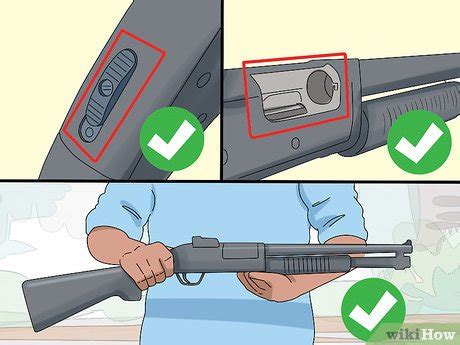Shotgun Safety: Simple Steps to Avoid Disaster
Shotguns, powerful and versatile firearms, demand respect and rigorous adherence to safety protocols. Improper handling can lead to tragic accidents, emphasizing the critical need for thorough understanding and consistent practice of safe gun handling. This article details essential shotgun safety practices, aiming to prevent accidents and promote responsible firearm ownership. We'll address common questions surrounding shotgun safety to ensure a comprehensive understanding.
Understanding the Fundamentals of Shotgun Safety
Before even picking up a shotgun, understanding the core principles is paramount. These aren't suggestions; they are absolute requirements:
- Treat Every Shotgun as if it Were Loaded: This is the golden rule. Never assume a shotgun is unloaded. Always physically check the chamber and magazine before handling.
- Keep Your Finger Off the Trigger Until Ready to Shoot: This prevents accidental discharges. Your finger should rest along the side of the receiver until you have acquired your target and are prepared to fire.
- Always Point the Muzzle in a Safe Direction: Never point the shotgun at anything you don't intend to shoot, even if you believe it to be unloaded. A safe direction is typically downrange at a designated target area.
- Be Sure of Your Target and What Is Beyond It: Understand the trajectory of your shot and the potential for ricochets. Ensure no people or property are in the line of fire or beyond your target.
- Unloading and Storage: Always unload your shotgun completely before cleaning, storing, or transporting it. Store it in a locked location, inaccessible to unauthorized individuals, particularly children.
What are the Most Common Shotgun Accidents?
Many accidents stem from negligence or a failure to adhere to the fundamental rules above. Common scenarios include:
- Accidental Discharges: These often happen due to improper handling, neglecting to check if the gun is loaded, or having a finger on the trigger while handling.
- Improper Storage: Easy access to loaded shotguns, particularly by children or individuals unfamiliar with firearm safety, poses a significant risk.
- Neglecting to Check for Obstructions: Before firing, always check the barrel for any obstructions that could cause a dangerous malfunction.
- Unsafe Handling During Cleaning: Cleaning a shotgun requires careful attention to detail and should be done with the firearm unloaded and pointed in a safe direction.
How Can I Prevent a Shotgun Accident?
Prevention is key. Here are proactive steps to mitigate risk:
- Formal Training: Take a certified firearms safety course. This provides structured learning, hands-on practice, and a deeper understanding of safe gun handling.
- Regular Practice: Consistent practice reinforces safe habits and improves your proficiency, reducing the likelihood of errors under pressure.
- Regular Inspection: Periodically inspect your shotgun for any mechanical issues that could compromise safety.
- Safe Storage: Invest in a gun safe or utilize a locked storage solution to prevent unauthorized access.
What Should I Do If a Shotgun Accident Occurs?
Immediate and appropriate actions are crucial in the event of an accident:
- First Aid: Provide immediate first aid to anyone injured.
- Emergency Services: Call emergency services immediately (911 in the US).
- Securing the Scene: Secure the firearm and prevent further accidents.
- Cooperation with Authorities: Cooperate fully with law enforcement.
How Often Should I Clean My Shotgun?
Regular cleaning is crucial for maintaining your shotgun's performance and safety. The frequency depends on usage but generally, after each use, is recommended. A clean firearm functions more reliably and reduces the risk of malfunctions.
What is the Best Way to Store a Shotgun Safely?
Safe storage is non-negotiable. Utilize a locked gun safe, preferably one that is bolted to the floor or wall, and keep ammunition stored separately from the firearm. This prevents unauthorized access and accidental discharges.
Conclusion
Shotgun safety isn't merely about following rules; it's about cultivating a culture of responsible firearm ownership. By adhering to these guidelines, undergoing proper training, and consistently practicing safe handling techniques, you can significantly reduce the risk of accidents and enjoy the sport responsibly. Remember, the consequences of neglecting safety are severe; responsible ownership is the only acceptable approach.

